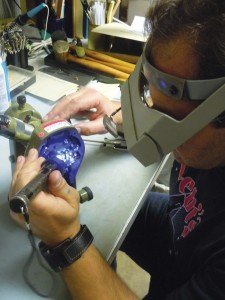Weather Balloons & Metrology Tools To Improve Forecasts

The study of meteorology, the science of weather and atmospheric phenomena, has evolved dramatically with advancements in technology. One of the most crucial tools that stands the test of time is the weather balloon. Weather balloons, equipped with specialized instruments, are integral to understanding atmospheric changes and improving the accuracy of weather predictions. This blog post delves into the use of weather balloons, the instruments they carry, and the significance of maintaining and calibrating these devices.

Weather Balloons: Windows into the Atmosphere
Weather balloons, also known as sounding balloons, are large balloons filled with hydrogen or helium. They are launched into the atmosphere, where they ascend to heights of up to 35 kilometers (about 22 miles). As they rise, they collect and transmit data on various atmospheric parameters, which are crucial for weather forecasting and climate studies. Many meteorologists and researchers use a comprehensive weather balloon kit that includes the balloon itself, a parachute, and an array of scientific instruments for data collection.
Specialized Instruments on Weather Balloons
- Radiosondes:
The most common instrument carried by weather balloons, radiosondes
measure temperature, humidity, and pressure as the balloon ascends. They can
transmit this data back to ground stations in real time or collect the
data to be retrieved once it returns. - Inclinometers
with a Compass: These instruments measure the angle of tilt or
inclination of the balloon and determine the direction of movement. By
assessing the tilt and direction, meteorologists can infer wind patterns
and turbulence at different altitudes. Using inclinometers
with a compass is essential for accurately mapping the
balloon's trajectory. - Compass
for Surveying: Modern digital compasses are used to determine the
exact direction in which the balloon is moving. This data, combined with
GPS coordinates, helps track wind direction and speed. A compass for surveying is crucial
for precise land observations as well. - Ozone
Sensors: These measure the concentration of ozone in the atmosphere,
providing valuable data on the ozone layer and air quality. - GPS
Receivers: These devices provide precise location data, which is
essential for tracking the path of the balloon and correlating it with
atmospheric conditions.
The Importance of Calibration
Accurate weather data depends on the precise functioning of all instruments aboard weather balloons. This precision is ensured through regular calibration. Calibration involves comparing the measurements from an instrument with a known standard and adjusting the instrument to eliminate any discrepancies. Many organizations rely on professional calibration services for metrology equipment to ensure their instruments are accurate and reliable.
Why Calibration Matters:
- Accuracy:
Without regular calibration, instruments can drift from their accurate
readings, leading to incorrect data collection. - Reliability:
Calibrated instruments are reliable and consistent, providing trustworthy
data for weather predictions. - Safety:
Inaccurate data can lead to faulty weather forecasts, which can have
serious implications for aviation, maritime activities, and disaster
management.
Consequences of Neglecting Calibration
Failure to maintain and calibrate meteorological instruments can lead to:
- Erroneous
Weather Predictions: Inaccurate data can result in incorrect weather
forecasts, affecting everything from daily weather reports to severe
weather warnings. - Poor
Climate Data: Long-term climate studies rely on precise data.
Uncalibrated instruments can distort our understanding of climate change. - Operational
Hazards: For industries dependent on accurate weather data, such as
agriculture and aviation, uncalibrated instruments can pose significant
risks.
Types of Weather Balloons and Their Use
Standard Weather Balloons: These are made of latex or synthetic rubber and are designed to expand as they rise and the pressure decreases. They usually carry a radiosonde and can reach altitudes where they eventually burst, allowing the instruments to parachute back to Earth.
Super Pressure Balloons: These balloons are designed to maintain a constant volume regardless of the external pressure. They can stay at a fixed altitude for extended periods, making them ideal for long-term atmospheric observations.
Zero Pressure Balloons: These balloons release excess gas through a valve as they ascend, maintaining a stable ascent rate. They are used for high-altitude research where consistent atmospheric measurements are needed.
Real-World Application
An example of weather balloon usage is during severe weather forecasting. Researchers launch weather balloons ahead of a predicted storm to gather real-time data on temperature, humidity, and wind patterns. This data feeds into computer models to improve the accuracy of storm tracking and intensity predictions.
Resources for Global Warming Impact
For readers interested in understanding the impact of global warming on weather patterns, the following websites offer reliable information:
Conclusion
The role of weather balloons and their instruments is vital in our understanding and prediction of weather and atmospheric changes. However, the accuracy of these predictions hinges on the meticulous calibration and maintenance of the instruments. Ensuring these tools are in top condition not only enhances the reliability of weather forecasts but also safeguards other sectors reliant on this data. As we continue to face the challenges of climate change, the importance of precise meteorological instrumentation, supported by professional calibration services for metrology equipment, cannot be overstated.